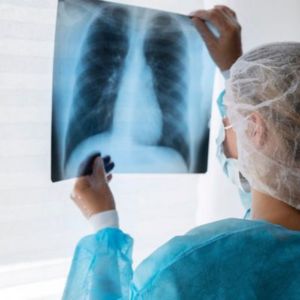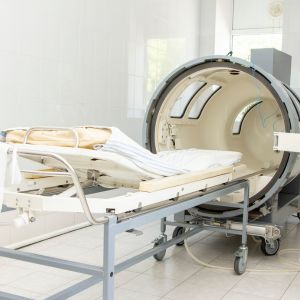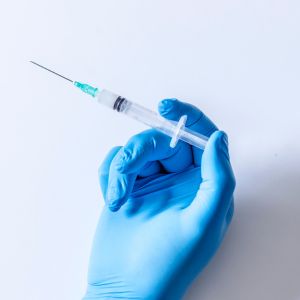
How to Detect and Diagnose Arthritis - A Complete Guide (2025)
Share
Arthritis is a chronic condition common in people who are aging. With poor lifestyle choices and diet habits, arthritis is now becoming common in adults over 21 as well. It is a condition where you will face joint pain, stiffness, redness, and inflammation.
The challenging aspect of arthritis is that once you are diagnosed with it, you cannot reverse the condition. However, you can find different ways to manage it and live a comfortable life once again.
If you are also one of those looking for a solution around how to detect arthritis, what are the types of arthritis diagnostic tests, and different arthritis therapies, then you have come to the right place.
When to Seek Diagnosis
Given below are some key symptoms that are a signal for you to get started on diagnosing arthritis and getting the right treatment for effective relief.
- High joint pain at any point during the day or throughout the day
- Stiff joints reducing your range of motion
- Constant swelling/ inflammation in the joints
- Redness around the joints
- Tenderness around the joints
- Skin discoloration
Common Tests for Diagnosing Arthritis
Getting any test done before consulting a professional is not advised. Basis your symptoms, you will be asked to take the arthritis profile test so that it can be confirmed. Given below are common tests recommended by professionals.
• X-ray

X-ray emits low levels of radiation that is good enough to visualize bones and bring out cartilage loss, bone spurs, and bone damage issues. It is more often used to track the progress of the condition.
• Magnetic Resonance Imaging (MRI)

This technique involves combining strong magnetic field with radio waves. It does not showcase joint pain diagnosis but can generate detailed cross-section visuals of soft tissues such as tendons, cartilage, and ligament.
• Ultrasound

Ultrasound comes in handy when an expert needs to guide needle placement for removing joint fluid or when they wish to inject medications directly into the joint. It primarily uses high-frequency sound waves to detect cartilage, soft tissues, and fluid-containing structures near the joints.
Computed Tomography (CT) scan
A renowned arthritis test name, CT scan, provides a cross-sectional view of the internal bone structure. It tends to visualize bone and all the surrounding soft tissues.
Based on your test results, your expert will see the damage inside your joints and assess the situation. The professionals also use the test to rule other injuries that might be triggering your joint pain and stiffness.
Common Arthritis Treatment
Once you are diagnosed with arthritis, there is no going back. It has no cure. The only solution is to manage the condition and co-exist with it. Depending on the type and stage of arthritis you have, these are some treatments that are commonly recommended by experts.
• NSAIDs

Nonsteroidal anti-inflammatory drugs (NSAIDs) help reduce inflammation and relieve pain. They are also available as creams or gels to be rubbed on the joints. Some different types of Nonsteroidal anti-inflammatory drugs (NSAIDs) are naproxen sodium (Aleve) and ibuprofen (Advil, Motrin IB, others). With growing penetration of alternative solutions, there are many supplements that have the same effect as NSAIDs but are completely natural.
•Counterirritants
They are primarily available in the form of ointments and creams based on capsaicin and menthol. These counterirritants can be rubbed over aching joints to give your joints the relief they deserve.
• Steroids

Steroids help slow the joint damage process and reduce inflammation. Corticosteroid medications, such as prednisone, are commonly used steroids. They are given orally as a pill or as an injection into the affected joints.
• Disease-modifying antirheumatic drugs (DMARDs)
DMARDs are widely known for slowing the progress of arthritis, primarily rheumatoid arthritis. It saves your joints and the surrounding tissue from any sort of permanent damage.
All these medications tend to cause some side effects and are suitable for a certain type of arthritis condition depending on the stage you are at. So, check with a professional to get customized treatment for your joint troubles. Do not self-medicate with such types of medicines.
Lifestyle Changes that help Tackle Arthritis
While medicines and surgeries are the general approach for arthritis, it is always best to try and tackle the condition by making changes in your lifestyle. This will reduce the dependency from external medications and help you heal from within, naturally. Whether you test for joint pain and are diagnosed with arthritis or if you are a healthy individual, these lifestyle changes will help you manage or prevent arthritis effectively.
- If you are overweight, shed the extra kilos. Being obese or overweight will put pressure on your joints and increase the chances of you developing arthritis.
- Exercise regularly to strengthen your muscles and joint tissues. Low-impact exercises like walking, cycling, and swimming are beneficial in staying active and living a healthy life
- Make sure your diet is filled with fruits, lean proteins, vegetables, and whole grains. Ditch fast food and embrace a healthy diet to make sure your joint tissues get the desired nutrition.
- Quit tobacco and alcohol consumption to reduce the risk of getting arthritis.
Conclusion
In case you were wondering how is arthritis diagnosed, then above are the ways arthritis can be detected after getting the right tests done. The key is to get diagnosed as early as possible and trust a professional with a way forward. Additionally, taking preventive measures further improves your chances of avoiding arthritis altogether.
Frequently Asked Questions (FAQs)
Q) What is the best test for arthritis?
A) Blood tests for arthritis like anti-CCP or rheumatoid factor and X-Rays/ MRIs are the best tests for arthritis detection.
Q) Can arthritis be diagnosed with a blood test alone?
A) Along with blood tests, physical and imaging exams can be done to diagnose arthritis.
Q) Are arthritis tests painful?
A) No, they are not painful. You might feel a normal pinch during blood tests.
Q) What therapies work best after diagnosis?
A) Physical therapy, medications, exercises, and lifestyle changes are the best therapies that work after diagnosis.